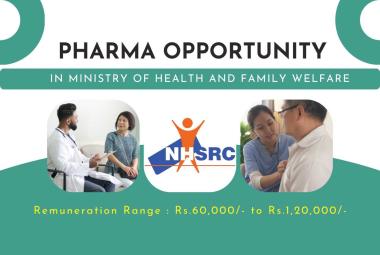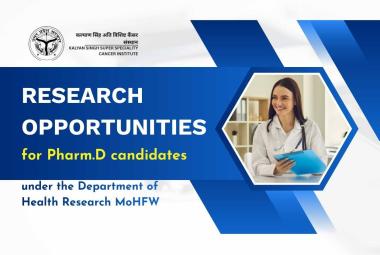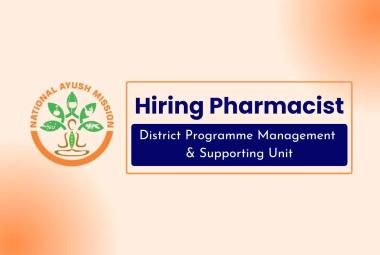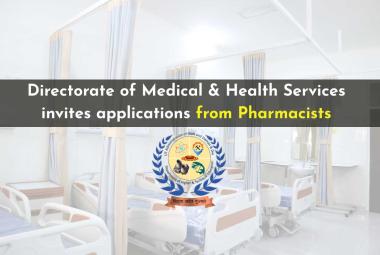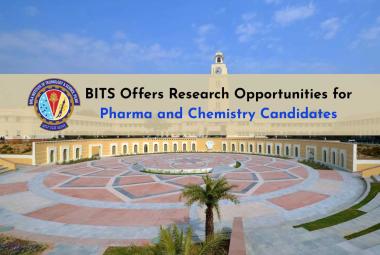About Author:
Divyasri Damacharla, Shruthi Gobbooru, IV.B.Pharm,
M.S.Ramaiah College Of Pharmacy
Abstract:
The use of prescription drugs in the treatment of diseases causes loss of essential nutrients from the body leading to various side effects. So Linus Pauling discovered the orthomolecular therapy which uses the essential nutrients which are found less in a particular disease condition. Here in Schizophrenia, certain negative and positive symptoms are observed with the use of certain prescription drugs. Besides, they are even ineffective sometimes. So, orthomolecular therapy has been developed and modified by various scientists like Drs Abram Hoffer and Humphrey Osmond in 1965 and treated and cured many hundreds of schizophrenic patients with their “Megavitamin formula”
Introduction:
Definition:
The schizophrenic disorders are characterized in general by fundamental and characteristic distortions of thinking and perception, and affects that are inappropriate or blunted. Clear consciousness and intellectual capacity are usually maintained although certain cognitive deficits may evolve in the course of time.
The most important psychopathological phenomena include
• thought echo
• thought insertion or withdrawal
• thought broadcasting
• delusional perception and delusions of control
• influence or passivity
• hallucinatory voices commenting or discussing the patient in the third person
• thought disorders and negative symptoms.
Schizophrenia is defined by
• a group of characteristic positive and negative symptoms
• deterioration in social, occupational, or interpersonal relationships
Typical stages of schizophrenia:
• prodromal phase
• active phase
• residual phase
POSITIVE AND NEGATIVE SYMPTOMS:
Negative symptoms: Alogia, Affective flattening, Avolition, apathy, Anhedonia, Asociality, Attention impairment.
Positive symptoms: Hallucinations, Delusions, Bizarre behaviour, Positive formal thought disorder.
GENETICS OF SCHIZOPHRENIA:
Many psychiatric disorders are multifactorial (caused by the interaction of external and genetic factors) and from the genetic point of view very often polygenically determined.
Relative risk for schizophrenia is around:
• 1% for normal population
• 5.6% for parents
• 10.1% for sibling
• 12.8% for children
ETIOLOGY:
The etiology and pathogenesis of schizophrenia is not known
It is accepted, that schizophrenia is „the group of schizophrenias“ which origin is multifactorial:
• internal factors – genetic, inborn, biochemical
• external factors – trauma, infection of CNS, stress
DOPAMINE HYPOTHESIS:
The most influential and plausible are the hypotheses, based on the supposed disorder of neurotransmission in the brain, derived mainly from
1. the effects of antipsychotic drugs that have in common the ability to inhibit the dopaminergic system by blocking action of dopamine in the brain
2. dopamine-releasing drugs (amphetamine, mescaline, diethyl amide of lysergic acid - LSD) that can induce state closely resembling paranoid schizophrenia
Classical dopamine hypothesis of schizophrenia: Psychotic symptoms are related to dopaminergic hyperactivity in the brain. Hyperactivity of dopaminergic systems during schizophrenia is result of increased sensitivity and density of dopamine D2 receptors in the different parts of the brain
CONTEMPORARY MODELS:
Dopamine hypothesis revisited: various neurotransmitter systems probably takes place in the etiology of schizophrenia (norepinephric, serotonergic, glutamatergic, some peptidergic systems); based on effects of atypical antipsychotics especially.
Contemporary models of schizophrenia conceptualize it as a neurocognitive disorder, with the various signs and symptoms reflecting the downstream effects of a more fundamental cognitive deficit:
• the symptoms of schizophrenia arise from “cognitive dysmetria” (Nancy C. Andreasen)
• concept of schizophrenia as a neurodevelopmental disorder (Daniel R. Weinberger)
NEURODEVELOPMENTAL MODEL:
Neurodevelopmental model supposes in schizophrenia the presence of “silent lesion” in the brain, mostly in the parts, important for the development of integration (frontal, parietal and temporal), which is caused by different factors (genetic, inborn, infection, trauma...) during very early development of the brain in prenatal or early postnatal period of life.
It does not interfere too much with the basic brain functioning in early years, but expresses itself in the time, when the subject is stressed by demands of growing needs for integration, during formative years in adolescence and young adulthood.
TREATMENT:
The acute psychotic schizophrenic patients will respond usually to antipsychotic medication.
According to current consensus we use in the first line therapy the newer atypical antipsychotics, because their use is not complicated by appearance of extrapyramidal side-effects, or these are much lower than with classical antipsychotics.
The usual forms of treatment are tranquilizers, psychotherapy or electroconvulsive therapy (ECT). There are many schools of thought and many opinions regarding the treatment of schizophrenia. It has been shown, however, that psychotherapy alone is not an effective treatment. ECT and tranquilizers may be useful as part of a good treatment program but cannot produce lasting benefits alone.
Orthomolecular treatment is reported to be effective in 80% or more of the cases and is the best treatment developed so far. This treatment usually includes a special diet, vitamins and minerals in accordance with the individual needs of the patient, and other therapeutic aids such as tranquilizers, supportive psychotherapy, and other treatments which the doctor thinks will be useful. Many persons with schizophrenia have low blood sugar (hypoglycemia) and allergies which are treated.
ORTHOMOLECULAR THERAPY
Orthomolecular treatment is defined as providing the brain and the body with the best possible biochemical environment, especially with those substances normally found in the body such as vitamins, minerals, amino acids and other essential molecules.
The Principal Components of the Treatment are Vitamins and minerals which are administered according to the individual needs of patients. A good diet is considered to be an important part of the therapy. Treatment for such disorders as low blood sugar, allergies, and thyroid problems are included when necessary. Sometimes tranquilizers are used for brief periods, and other treatments and supportive therapy are included
The orthomolecular treatment can be used for a wide variety of disorders such as schizophrenia and other mental illnesses, behaviour and learning disorders in children, problems of aging, alcoholism and addiction, arthritis, heart and circulatory problems and many other diseases
The present Orthomolecular program for treating schizophrenia was developed chiefly by members of the Committee on Therapy of the American Schizophrenia Association with minor variations in dosages and in the adjunctive therapies which are used. The program is based upon our philosophy that schizophrenia is a chronic condition which is more comparable as a model to diabetes which requires the continuous use of insulin and diet than it is to pneumonia which will respond to one series of treatments of antibiotics.
The Orthomolecular Approach
In the Orthomolecular approach, simplest treatment is applied first, then depending upon the response, apply more difficult and varied treatments until the patient has achieved either a full or near recovery. The program cannot be defined in terms of months or years.No trial is completed until at least five years have lapsed from the beginning of the treatment. Several patients have become well after seven years.
The original work on megavitamins for curing schizophrenia was done by Drs Abram Hoffer and Humphrey Osmond in 1965. They reasoned that since pellagra, a niacin deficiency disease, caused schizophrenia, perhaps the lack of niacin was a major factor. They proved that this was true, and "cured" hundreds of schizophrenic persons with the famous megavitamin formula.
Megavitamin Formula. This is a combination of 333 mg of vitamin C, 333mg of niacin (or niacinamide), 66 mg of B6, and 66 IU of vitamin E in each capsule. The patient is given three capsules three times a day.
Their treatment program is divided into phases. Phase I is the chemotherapy of schizophrenia without electro-convulsive therapy (ECT). It is usually given to acute schizophrenics who can cooperate with
treatment as outpatients, or who have families who ensure that the medication is taken as directed. Patients who are so ill that they have to be admitted to hospital for treatment are not started on Phase I but go into, what I call Phase II, that is, they are given a series of ECT in combination with chemotherapy.
PhaseI.Treatment
In Phase I, the patients are started on vitamin B3 three or four grams per day. Vitamin B3 is used to cover both nicotinic acid, the form which produces a flush the first few times it is taken and nicotinamide, which is not a vasodilator. they started with nicotinamide with all patients under the age of 21 simply because young people have a much harder time with the flush. With male patients over 21, they started with nicotinic acid because of the positive side effects, such as, the lowering of cholesterol levels and the decrease in the incidence of coronary disease as well as a decrease in the incidence of senility. With women who are concerned about the cosmetic effect of the Flush, they start with nicotinamide but otherwise will begin with nicotinic acid.
Chronic patients tend to do better with nicotinic acid, the reason being that it is possible to increase the dose to higher levels. There is a maximum dose beyond which one cannot go, not because it will produce any serious toxicity, but because it produces physiological reactions such as nausea and vomiting which severely limits further intake. As a rule, it is seldom possible to go beyond six or nine grams a day of nicotinamide, but it is quite possible to go up to 25 or 30 grams a day of nicotinic acid without developing nausea and vomiting.
In addition to the vitamin B3, patients are also given ascorbic acid from one to three grams per day and other water-soluble vitamins. they used vitamin B1 (thiamine) if there is a good deal of depression and vitamin B6 (Pyridoxine) if there is a good deal of muscular hyper-activity, for example, in the hyperkinetic child or in the epileptic. For fatigue, they used vitamin B12. In addition to adjusting the vitamins, they are placed upon a nutritious diet which means reducing the intake of refined foods, such as flour and sugar, increasing the frequency of feeding and of course, increasing the proportion of protein. Attention must also be given to the use of minerals such as zinc, calcium, magnesium,iodine.
Many early cases of schizophrenia will not require anything more than this nutritional approach. they have a series of several hundred who have never received any other chemotherapies commonly used in psychiatry. However, if the patient is severely disturbed or severely depressed, it may be essential to use the tranquilizers, etc. they used moderate quantities of tranquilizers on out patients because the vitamin approach tends to improve the efficiency of these substances. Patients admitted to the hospitals are treated with heavy dosages of tranquilizers because it is important to bring them under control within 48 hours.
After the patient has been on this program for a reasonable period of time, say about a month, he is reevaluated. If he is much improved, he is continued on the same program until he has made a complete recovery. By recovery means that he is free of signs and symptoms, that he is functioning well in the community, that he is getting along well with his family or at least as well as he did before he got sick, that he is a productive member of society
The dosages of vitamin B3 may have to be varied in order to achieve this state; between three to 30 grams a day for nicotinic acid and usually between three to nine grams a day for nicotinamide. However, once the patient has recovered, the dosages are slowly reduced until a proper maintenance is obtained. This is usually well under nine grams per day although a few cases have been higher. Tranquilizers, etc. are slowly removed from the program.
Phase II. Treatment
If the patients do not respond in a reasonable period of time to Phase I treatment, he becomes a candidate for Phase II treatment, that is, he will receive a series of ECT either as an outpatient or as an inpatient in addition to the chemotherapy.. After the ECT, if the patients are substantially improved, they are discharged on the same chemotherapy.
Phase III. Treatment
If the patients have not responded, they are Phase II failures. I consider them Phase III treatment problems and will continue to work with them trying out various forms of chemotherapy and often adding to the therapeutic program penicillamine, known commercially as cuprimine, up to one gra per day. Penicillamine is a copper chelating agent which picks up extra quantities of copper from the body.
In Phase III, a five year program is laid down which might include bringing them back into the hospital every six to twelve months for a short series of ECT and for the application of various chemicals which might be of some help to them. . In this stage, onewill also use more sophisticated techniques, for example, injectable vitamins.
Expected Results
One can expect the following results. If one were to start with a cohort of schizophrenic patients ill for one year or less, coming from the community but who have not been injured by residing in a chronic mental hospital, one would expect over a two year period to achieve over ninety percent recovery rate.
The other ten percent will be better and none will have been made worse.
If, however, one started with a cohort of patients who have been sick between one and ten years but who have not been injured by residing in a chronic mental hospital, one would expect perhaps 70 per cent recovery or better.
If one were to start with a chronic population who have been treated in chronic mental hospitals for anywhere from one to 20 or more years, the recovery results are very much less and I would be surprised if one could get more than 25 per cent recovery. However, even with these chronic cases most of them will be vastly improved and will be able to function in the community to a limited degree.
C. EVIDENCE THAT THE ORTHOMOLECULAR PROGRAM WORKS
Dr.Osmond and hoffer directed the first double-blind control experiment in the history of psychiatry in 1951 in Saskatchewan. The first experiment was a controlled study of the effect of certain yeast nucleotides. The second double-blind experiment was a study comparing the efficacy of nicotinic acid, nicotinamide and placebo in each case using three grams per day.
Double-blind Study of Thirty Acute Schizophrenics
This study was that: Thirty acute schizophrenic patients admitted to a hospital and diagnosed by their own clinicians were randomized using random numbers into three groups of roughly ten each.
All of the 30 patients received the usual psychotherapy given at this unit which was very dynamic and gave each patient about three hours per week of psychotherapy.
In addition, each therapist gave his patient ECT if this was indicated. Insulin coma was not used and the tranquilizers had not been introduced. Ten of the patients received nicotinic acid three grams per day. This group would be betrayed by the flush due to the nicotine acid and therefore, could not be considered a proper control group. However, a second group was given nicotinamide which does not produce any flush, while the third group received placebo. there were only be two medications in this trial-placebo and nicotinic acid. They assumed that all of the patients who flushed were receiving nicotinic acid and that the others were on placebo. In fact, half of the non-flushers were on nicotinamide. The patients were all evaluated before the treatment by a team of psychologists and clinicians. The study ran 33 days at the end of which time the medication was discontinued and the patients were reevaluated.
One Year Follow Up
The patients were followed up for one year by a trained worker who did not know what treatment they had in the hospital. Patients were recalled at three-month intervals. At the end of twelve months, after the last patient had been treated, the code was broken and the results were evaluated.
Evaluation of the Study
It turned out that of the ten or so patients receiving nicotinic acid seven had remained well over that year. Of the ten or so nicotinamide patients, seven or eight had remained well, while of the ten placebo patients only three had remained well. Around 75% of the patients receiving vitamins had remained well, whereas, only one-third of the patients receiving placebo had remained well. It is important to remember that about twothirds of all the patients had also received ECT so that this was a study of the combination of ECT plus megavitamins.
Double-blind Study of Eighty-two Schizophrenic Patients
They repeated the study on a larger scale, to make sure there had been no hidden errors. they, therefore, started the second double-blind clinical experiment using the same design except that this time they did use nicotinic acid and placebo and Followed the previous design. With their second study, they were able to treat 82 patients. The results were very similar.
CONCLUSION:
The evolution of the Orthomolecular approach where various historical streams of research have come
together and have been combined into a major stream that we call Orthomolecular psychiatry. Orthomolecular therapy in psychiatry has been proven more effective for treating schizophrenia than standard therapy. It is coming into use very rapidly for treating learning and behavioral problems in children, for alcoholics and for other patients with many perceptual difficulties.
ACKNOWLEDGEMENTS:
A humble thanks to Mrs. Anitha Murali, Head of the department, Pharmacology, M.S.Ramaiah college of Pharmacy for encouraging us to carry on a review about schizophrenia and its orthomolecular therapy. We are grateful to Our Principal, Dr.V.Madhavan for providing us unlimited support. Thanks to the other staff of M.S.Ramaiah college of pharmacy, who have indirectly contributed their help for making this effort a successful attempt.
We are grateful to pharma shine for allowing us to participate in this fabulous and knowledge oriented event.
Last but not least, we are grateful to our parents and siblings for their never-ending love, help and support without which this attempt would not have been possible.
References:
1. drbate.com
2. lightparty.com
3. orthomed.org
4. wikipedia.org
Reference ID: PHARMATUTOR-ART-1031



